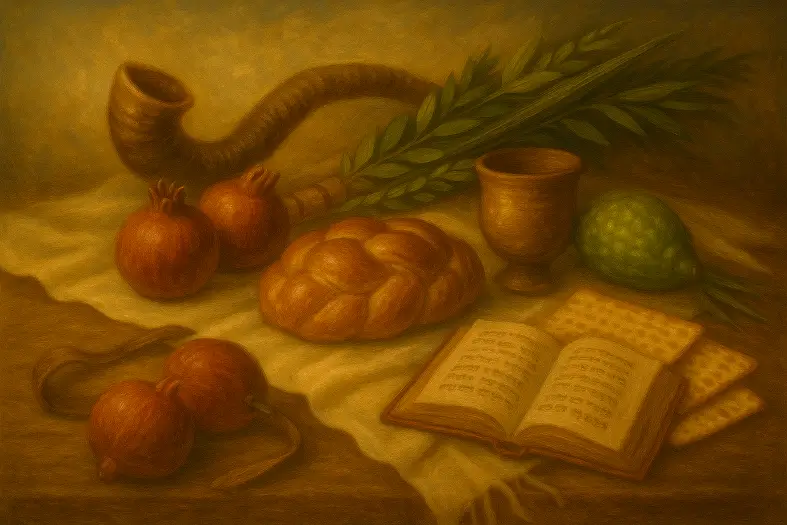


On Shavuot, Israel must bring musaf offerings: bulls, a ram, lambs, a goat, and peace offerings, in addition to the daily tamid.
The musaf of Shavuot marks the completion of the Omer count and the bringing of the two loaves (mitzvah 387). The offerings included two bulls, one ram, seven lambs as olot, one goat as a sin offering, and two lambs as shelamim — unique among the festivals. Rambam (Hilchot Temidin uMusafin 8:1) codifies these korbanot as integral to Shavuot’s sanctity.
Sefer HaChinuch (Mitzvah 307) explains that the abundance of animals, paired with the new grain loaves, reflects joy and thanksgiving for the harvest. The Talmud (Menachot 45b) emphasizes that the shelamim lambs were waved with the loaves, symbolizing Israel’s unity with Hashem. Midrash Rabbah (Vayikra 28:11) connects the musaf to Matan Torah, teaching that sacrifices express Israel’s dedication as they received the Torah.
Commentary & Classical Explanation:
Contrast with Pesach Musaf (Mitzvah 383):
Parallel to Sukkot Musaf (Mitzvah 390):


Mitzvot related to the Jewish festivals — their observance, rituals, prohibitions, and spiritual significance. This includes Torah-commanded holidays like Pesach, Shavuot, and Sukkot, as well as rabbinic celebrations such as Purim and Chanukah.
Concerns the Beit HaMikdash, korbanot (offerings), and priestly service.
Mitzvot that strengthen communal life — showing up, participating, supporting, and belonging. Community is where holiness is shared, prayers are multiplied, and responsibility becomes collective.
Represents Emunah—the deep, inner trust in Hashem’s presence, oneness, and constant involvement in our lives. This badge symbolizes a heartfelt connection to G-d, rooted in belief even when we cannot see. It is the emotional and spiritual core of many mitzvot.
Represents the concept of spiritual intentionality, purity, and sanctity—set apart for a higher purpose.
Mitzvot that define and deepen the relationship between a person and their Creator. These include commandments involving belief, prayer, Shabbat, festivals, sacrifices, and personal holiness — expressions of devotion rooted in divine connection.

Dive into mitzvot, prayer, and Torah study—each section curated to help you learn, reflect, and live with intention. New insights are added regularly, creating an evolving space for spiritual growth.

Explore the 613 mitzvot and uncover the meaning behind each one. Discover practical ways to integrate them into your daily life with insights, sources, and guided reflection.

Learn the structure, depth, and spiritual intent behind Jewish prayer. Dive into morning blessings, Shema, Amidah, and more—with tools to enrich your daily connection.

Each week’s parsha offers timeless wisdom and modern relevance. Explore summaries, key themes, and mitzvah connections to deepen your understanding of the Torah cycle.